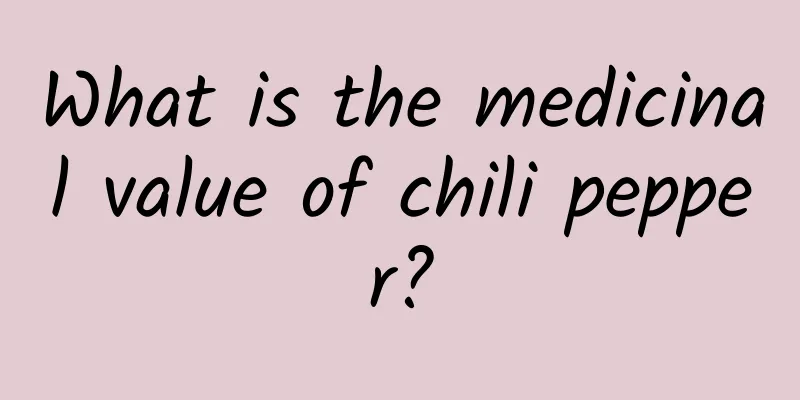What is the medicinal value of chili pepper?

|
Ipomoea batatas is a kind of plant medicine in traditional Chinese medicine. It is also called big white rice fruit. Ipomoea batatas has very high medicinal value and comprehensive effects. It generally grows in the mountains, can bloom, and can be used as medicine. Eating Ipomoea batatas can effectively lower blood pressure, effectively prevent liver diseases, and protect the body. Original form The leaves are large shrubs, 1 to 3 meters high, rarely up to 5 meters. Many branches, deeply grooved when young, with dense and raised lenticels. The leaves are regal; petiole 1-2.5 cm long; leaf blade is hard, papery to nearly leathery, ovate to broadly ovate or oblong-ovate, 8-17 cm long, 5-9 cm wide, apex acute, suddenly acuminate or acuminate, base cuneate or nearly rounded, margin with wavy teeth or sparse fine teeth or coarse teeth; dorsal veins are raised, veinlets are not very obvious, with obvious vein-like glandular stripes. Inflorescence raceme or panicle, often branched only at base, axillary and nearly terminal, 3-5 cm long; bracts triangular ovate or nearly lanceolate, pedicel 1-2 mm long; bracteoles broadly ovate, close to calyx base; flowers about 2 mm long; sepals broadly ovate, longer than or nearly equal to calyx tube, with sparse pubescence; corolla white or yellowish green, bell-shaped, with inconspicuous venation glandular stripes, lobes equal to or slightly longer than corolla, broadly ovate, rounded at apex, with wavy margins; stamens in male flowers are inserted in the middle of corolla tube, inside; filaments slightly longer than or nearly equal to anthers; anthers round; pistil not exceeding stamens, stigma slightly fissured. The fruit is ovoid or nearly spherical, about 3 mm in diameter, with longitudinal ribs; the persistent calyx covers the top of the fruit. The flowering period is from April to May, and the fruiting period is from September to November or from April to July. Medicinal value of basil Nature and flavor and meridians Slightly bitter in taste; cool in nature; enters the lung, liver and stomach meridians. Efficacy and function Clears away heat and dampness; lowers blood pressure. Mainly used to treat hepatitis, diarrhea, measles and hypertension. How to use For internal use: decoction, 15-30 grams. Related Combinations For the treatment of acute icteric hepatitis: Take Liangmianqing with Cuiyuncao, Verbena and Imperata root, and decoct them in water. Collection and processing The whole plant can be harvested throughout the year, cut into sections and dried. Leaves, harvested in spring and summer and sun-dried. |
<<: What are the medicinal values of agarwood?
>>: What are the effects of oyster grass?
Recommend
Why do most people not remember anything before the age of 3?
Friends Try to recall Do you remember what happen...
The efficacy and function of Evodia rutaecarpa
Speaking of Evodia rutaecarpa, I believe many fri...
The world's first! Tsinghua team successfully developed a "memristor chip"!
Recently, the team of Professor Wu Huaqiang and A...
The efficacy and function of hairy maple
Hairy Acer truncatum is a very common Chinese med...
The truth about "oyster sauce can increase uric acid levels" →
Recently, several friends asked me the same quest...
The efficacy and function of thick skin incense
There are many common Chinese medicinal materials...
International Freshwater Dolphin Day | Let’s celebrate the holiday for these river elves!
October 24 is International Freshwater Dolphin Da...
The efficacy and function of Ligustrum lucidum
In modern life, everyone is very familiar with va...
The UK is accelerating the development of the sixth-generation fighter jet, pulling in Japan and Italy, and also creating a "digital revolution"
LONDON, United Kingdom — Three years after the Un...
Missed the Nobel Prize because I listened too much to the experts丨Virus Super Topic
To obey the law without changing it is to be perv...
The efficacy and function of water bitter fruit
The fruit of water sophora flavescens is a common...
The efficacy and function of Vernonia
For the Chinese medicinal material such as Vernon...
World Quantum Day | You read that right! Lasers can really cool particles!
As early as in the middle school physics class, t...
What are the effects of Poria cocos
Poria cocos has many functions, such as treating ...









